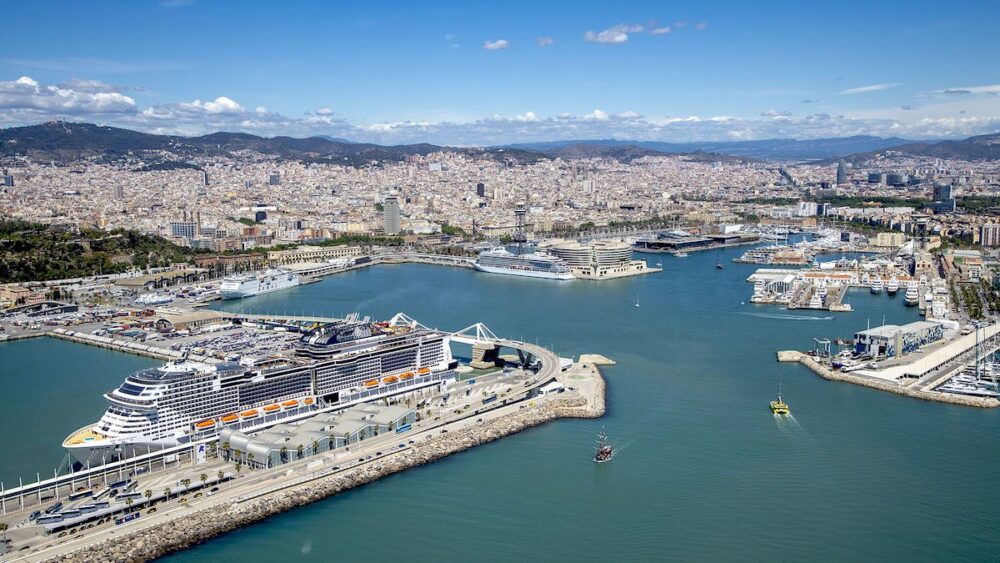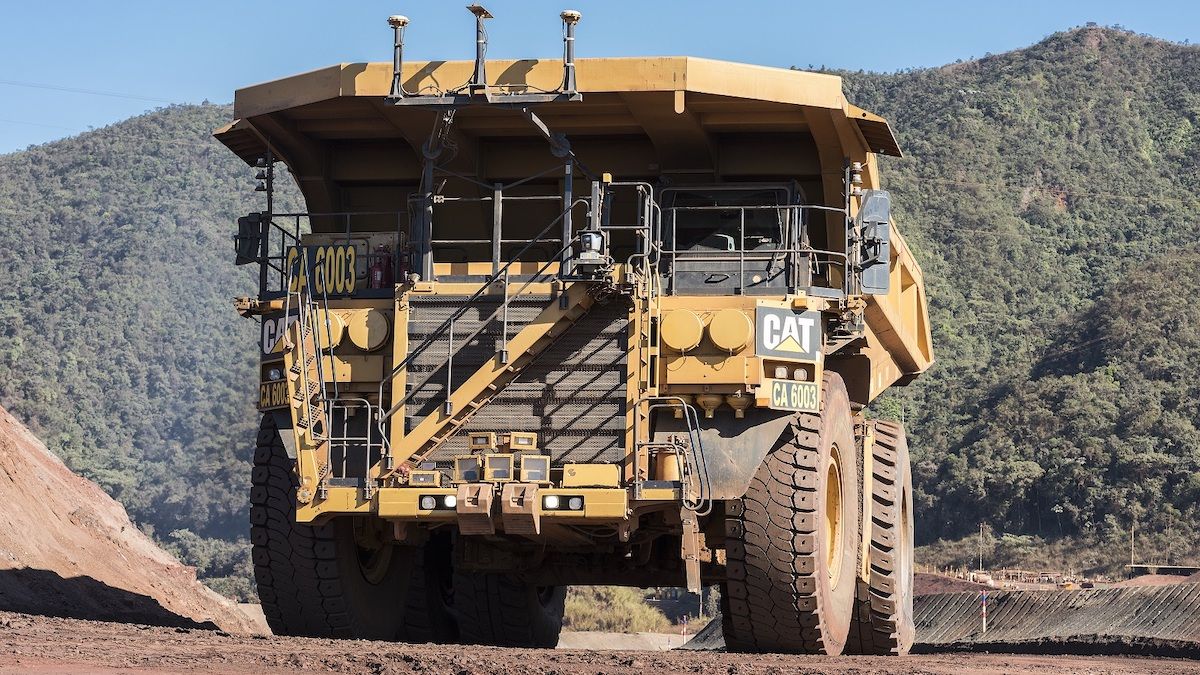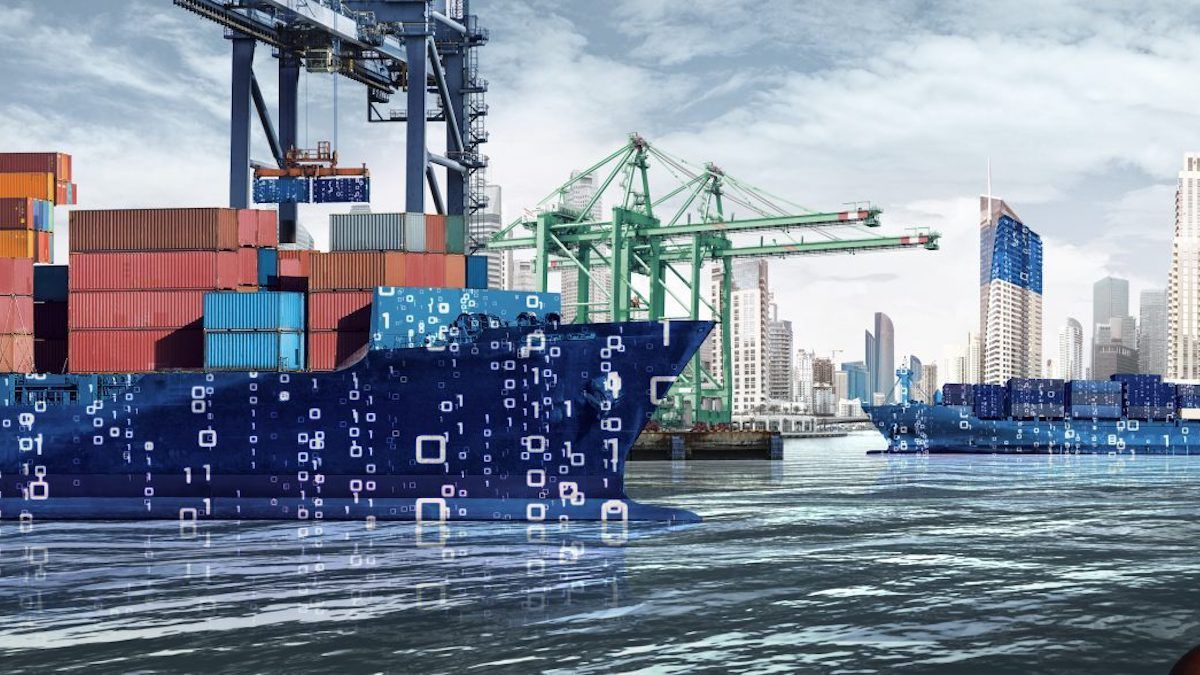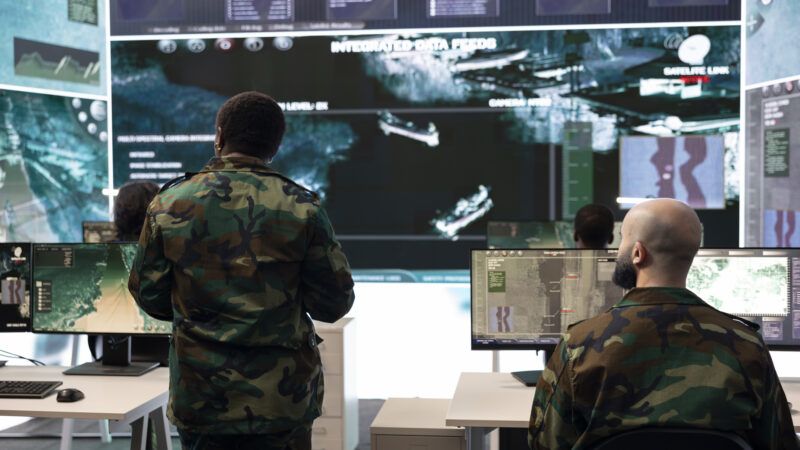 Port digitalization and automated maritime transport will generate a great impact in port operations. (Port of Barcelona)
Port digitalization and automated maritime transport will generate a great impact in port operations. (Port of Barcelona)
Digitalising and automating intra-port freight flows
A collaborative project between the Port of Barcelona, BlueFocus and Ports & Logistics Advisory identified the most relevant mega-trends affecting ports and maritime transport. Amongst all of them, digitalisation is one of the most impacting trends on port operations. In this article, we discuss one potential implication this has for ports: a shift of the management of intra-port traffic flows.

Xavier Roca is Managing Partner of blueFocus, a strategy and operations consultancy.

Dr. Peter de Langen is the owner and principal consultant of Ports & Logistics Advisory, co-director of the knowledge dissemination platform porteconomics.eu.
 Port digitalization and automated maritime transport will generate a great impact in port operations. (Port of Barcelona)
Port digitalization and automated maritime transport will generate a great impact in port operations. (Port of Barcelona)
Digitalisation has a clear and profound effect on global supply chains and port operations. The share of fully computerised bookings of containers is growing rapidly, blockchain is used for end-to-end data transmission in the supply chain and port operations are increasingly automated. In all these advances, the so called port development company is often reconsidering its role. Although in many countries, for instance in Spain, the term port authority is used, in our view the term port development company suits better.
The first wave of initiatives by port development companies involved the joint development of port community platforms or port community systems (PCS) like Portbase in Rotterdam, Dakosy in Hamburg, ValenciaportPCS in Valencia or Portic in Barcelona, which have demonstrated to create value, both for the companies that use them and for society at large, mainly through enabling data exchange, reducing the need for paper documents and avoiding errors in documentation.
The second wave: autonomous driving
Currently, a second wave of digitalisation, often building on the data available in a port community system, aims to streamline, improve and even automate planning of port and intermodal operations based on data availability. Key areas include the integrated planning of nautical services such as towage, pilotage, mooring bunkering and ship inspections as well as integrated planning of feeder and intermodal operations. In this article, we explore the case of integrated planning for intra-port container road movements.
The core prospect for road transport is self-driving or autonomous trucks. The technology is available, is being tested in various countries and has been implemented in specific environments, such as mines with Vale successfully operating autonomous trucks, and industrial sites.

The regulatory hurdles for its widespread implementation are still huge, but both Europe and the US are aware of the benefits of being ahead in these developments, which translates in a high willingness to remove such barriers. Most likely, autonomous driving will start at specific highway stretches and in specific confined areas. That is where ports and more precisely intra-port flows come in: they meet all the requirements to serve as pilot areas for an early implementation of autonomous trucks
Ports ahead of the game
In the ports industry, the Port of Singapore is a first mover in bringing this technology to ports. Autonomous trucks are being tested on a corridor between port terminals in Singapore, the stretch including public roads.
In Port of Rotterdam, a specific infrastructure for such inter-terminal flows is under development, and is being prepared for autonomous driving, even though its introduction is not going to be a walk in the park, as the main labor union has voiced its opposition.
To finish with these examples, the Port of Barcelona is promoting an innovative project called ITACA (Intelligent Transport Autonomous Corridor Area) which aims to develop technologies to build logistic corridors for autonomous trucks with the expected pilot case to be carried out with electric and hydrogen trucks and controlled by a 3D Digital Twin.

While intra-port terminal flows are clearly the most promising flow for automation, container flow is between the container terminals and the warehouses in the port area are coming in strong. The size of these flows differ between ports: in a port like Antwerp, with over 2 million m2 of warehouse space, these flows are huge and it is estimated that as much as 40% of its total container volume has a destination in the greater Antwerp area being intra-port traffic a huge chunk of that figure.
Intra-port flows meet all the requirements to serve as pilot areas for an early implementation of autonomous trucks
In Barcelona, volumes between terminals and logistics facilities (comprising both the formal ZAL zone and logistics facilities in the port area and in other nearby warehouses on private land) are also substantial. Overall, the total area for logistics near the Port of Barcelona is of over 300 hectares, with one hectare translating into, roughly, 1,000 yearly container moves, with obviously large variations between warehouses.
These ‘guesstimates’ lead to a yearly container volume between the terminals and the logistics area of around 300,000 TEU. That equals around 15% of Barcelona’s import export volume, which intuitively seems about right. If these volumes are more or less correct, that implies about 500 daily truck moves from terminals to warehouses in the port area and vice versa. With increasing inaccuracy, as we miss information about the volume per truck as well as the occurrence of empty hauls.
Room for improvement
Currently, these volumes are managed individually and uncoordinated. A shift to a centralised model with autonomous trucks would seem viable and create synergies, thus improving the competitiveness of the port. In such a model, individual companies notify their ‘trip demand’ to a centralized trip service provider, in pretty much the same way individuals notify their trip demand to a service provider like Uber. This would allow for the use of autonomous and electric trucks, with the associated environmental benefits.

A PwC report points out that with the adoption of autonomous trucks in 2030 will have the following advantages: 47% of reduction of total logistics costs; 40% of reduction of delivery times; and finally, a reduction of 78% of the vehicle time in the roads.
In contrast to the personal mobility market, the challenge of achieving the critical mass (volume) to be able to operate such a service may be too complicated to assume a private service provider will take this initiative for port volumes. Thus, an active role of the port development company, together with all the relevant stakeholders, including trucking companies and truck drivers, may be called for. One can imagine that after an initial testing period, the use of the service might become mandatory for logistics companies with facilities in the port area.
Given the governance complexity, early movers will be those ports that manage to develop/adapt governance structures rapidly to promote the automation and electrification of intra-port freight flows. Perhaps here Singapore, with its influential Committee on Autonomous Road Transport in Singapore (CARTS) is also a benchmark.





